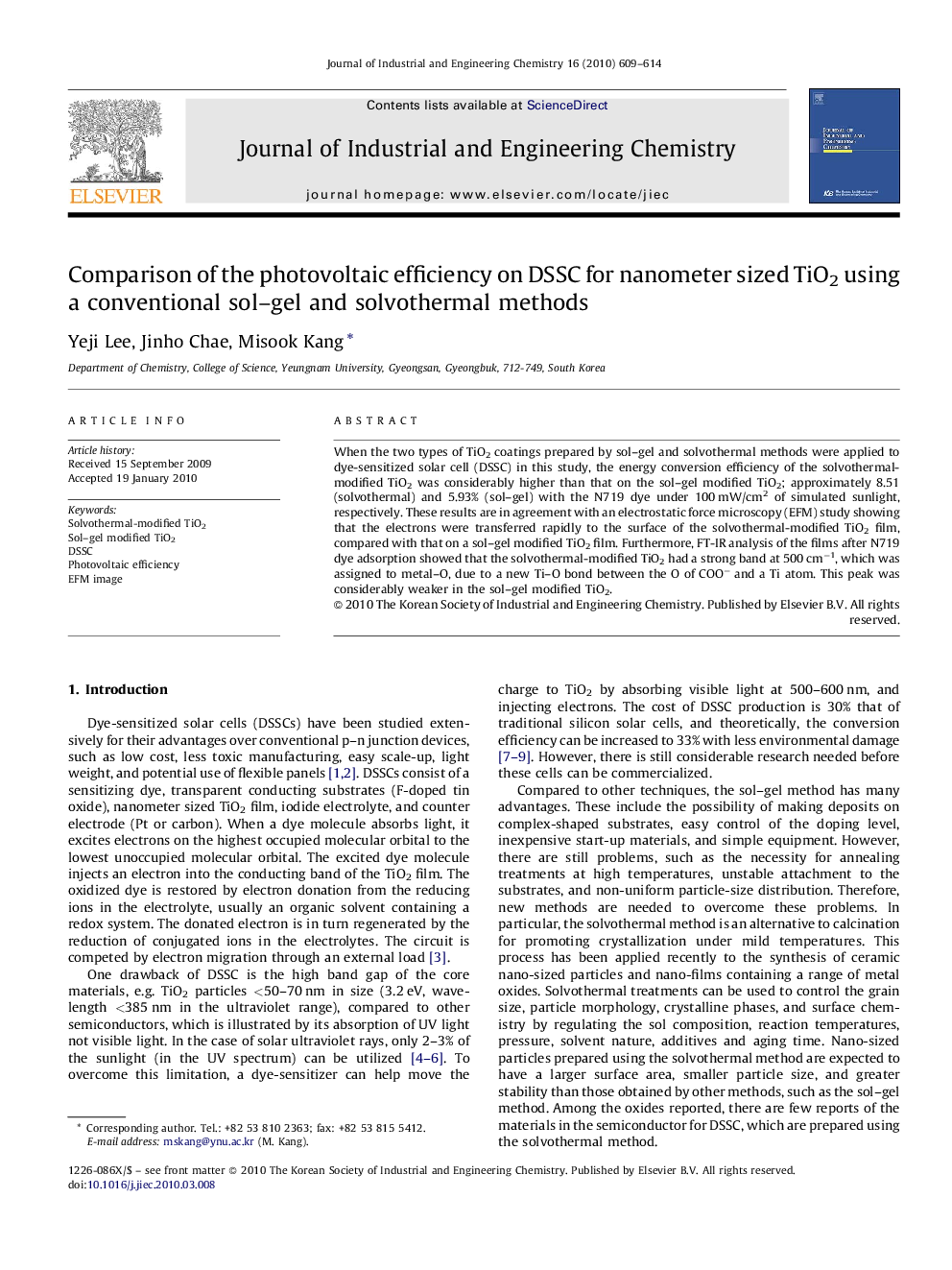| Article ID | Journal | Published Year | Pages | File Type |
|---|---|---|---|---|
| 228344 | Journal of Industrial and Engineering Chemistry | 2010 | 6 Pages |
When the two types of TiO2 coatings prepared by sol–gel and solvothermal methods were applied to dye-sensitized solar cell (DSSC) in this study, the energy conversion efficiency of the solvothermal-modified TiO2 was considerably higher than that on the sol–gel modified TiO2; approximately 8.51 (solvothermal) and 5.93% (sol–gel) with the N719 dye under 100 mW/cm2 of simulated sunlight, respectively. These results are in agreement with an electrostatic force microscopy (EFM) study showing that the electrons were transferred rapidly to the surface of the solvothermal-modified TiO2 film, compared with that on a sol–gel modified TiO2 film. Furthermore, FT-IR analysis of the films after N719 dye adsorption showed that the solvothermal-modified TiO2 had a strong band at 500 cm−1, which was assigned to metal–O, due to a new Ti–O bond between the O of COO− and a Ti atom. This peak was considerably weaker in the sol–gel modified TiO2.
